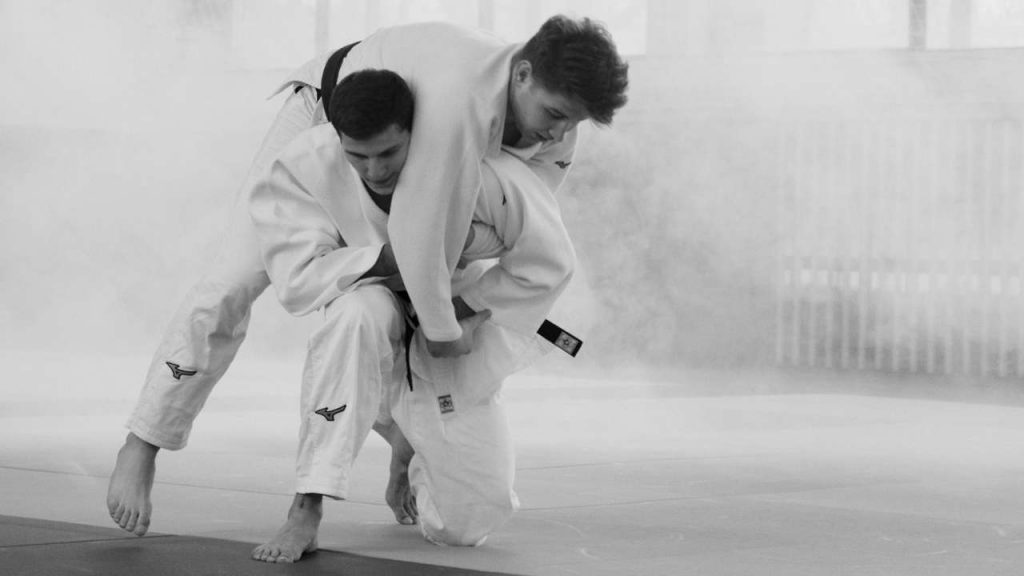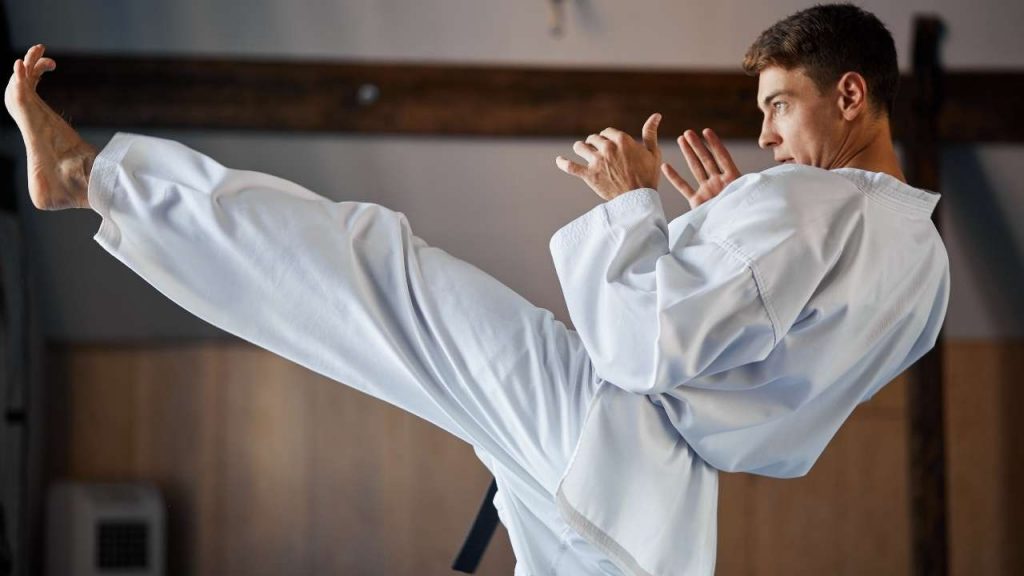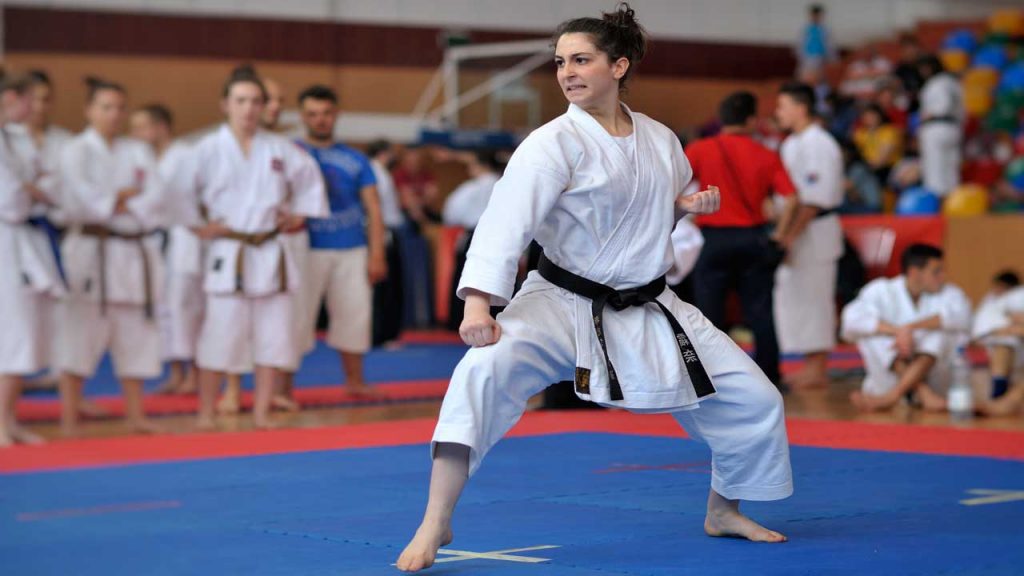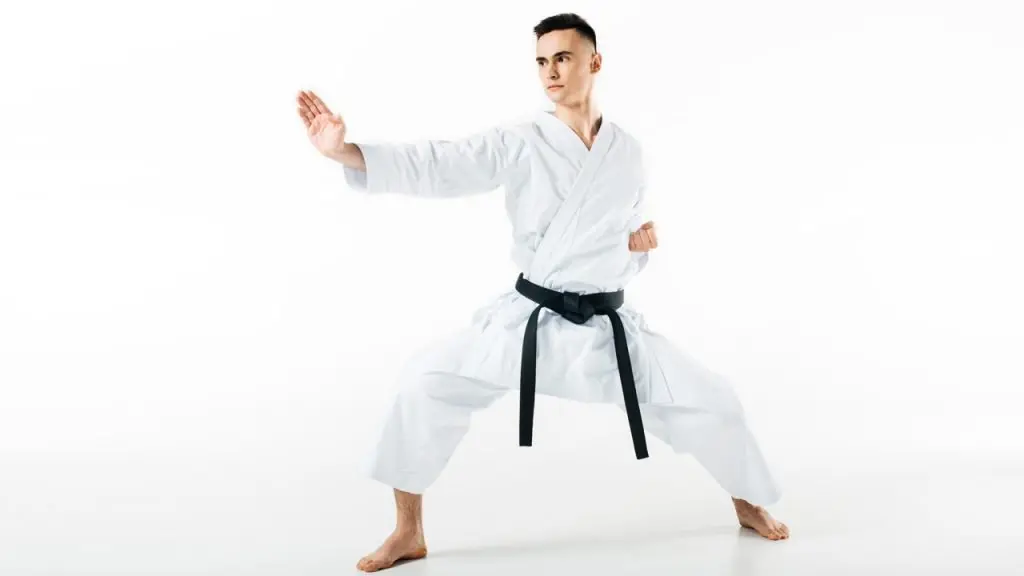Learning karate is a great way to improve fitness, enhance physical and mental ability, and train yourself for possible self-defense situations. Nothing beats learning karate at a sensational and respectable karate school or dojo, face-to-face with a skilled and experienced teacher or sensei.
However, if you don’t have the resources, time, or opportunity to go for regular classes but still want to learn this fascinating martial art, there is a lot you can achieve by learning at home. While this can never replace direct training, you can surely pick up the basics of the discipline, learn about its history and philosophy, and get proficient in basic form and technique.
Here are some step-by-step instructions for how to learn karate at home.
Table of Contents
1. Relive the Karate History

If you want to truly immerse yourself in karate, learning about its rich history and heritage is a great way to get yourself ready and invested. From its inception in Okinawa as an offshoot of Chinese martial arts to its evolution over the ages, the history of karate is full of inspiring stories and core knowledge that can mentally prepare you for the road ahead.
You can learn about different disciplines of karate and their core tenets. Learning more about the discipline puts you in an informed, insightful place, a perspicacious starting point for your learning journey.
2. Keep Karate Training Safe

To start learning karate safely at home, you need to be in the right physical and mental state which does not mean you should be acting like Clubber Lang in Rocky III – because that was beyond the pale. Your body needs to be ready to absorb the stress of karate practice and your mind needs to be in a calm, peaceful place.
To get yourself into the right physical shape to start karate practice, you can start a basic exercise routine. It’s a prudent idea to include light cardiovascular exercise like walking, jogging, running, or cycling in your routine, as well as basic stretching exercises to ensure that your arms and legs can stand up to the intense striking.
If you are confined to an indoor area, you can try running in place, jumping jacks, sit-ups, push-ups, reverse push-ups, and leg lifts to get to a comfortable place where you can complete a few reps of these without feeling tired and winded.
For mental preparation, the best method is meditation. Sit cross-legged in an empty room, practice deep breathing, and let your mind become empty of all thought. With practice, you would be able to reach a place of calmness, peace, and total focus and concentration which is vital to your karate training.
If you find yourself wondering how to do karate at home, these steps are crucial as they will make your mind and body prepared for safe karate practice.
3. Master the Karate Stances

To start karate training at home, the first thing you need to master is the karate stance. The stance is the most important basic karate technique as it allows you to balance yourself properly, maintain a low center of gravity, and prepare for different striking techniques.
For starters, learn about the 3 most basic karate stances and practice them, preferably in front of a mirror so you can monitor yourself:
- The natural or walking stance (shizentai-dachi) – This basic walking stance has your legs straight and your dominant foot in front. The front foot should point forward and the back foot is placed at a 45-degree angle. In this stance, you need to balance your weight fairly equally among both feet while adopting a side-on position while looking forward.
- The front stance (zenkutsu-dachi) – Next, retain the same technique as your walking stance but place your feet further apart while bending your legs partially in the knees. Then, lean forward so that most of your weight rests on your front leg.
- The rear stance (nekoashi-dachi) – Remain in the basic natural stance but lean back and put most of your weight on your rear leg. Then, bend your front leg slightly and raise the heel from the ground. At this point, only the front and toes of your front leg should be touching the ground.
These basic karate stances are starting-off points from which a variety of strikes can be thrown and forms or katas initiated.
Once you have got the hang of these stances, look at the traditional progression of karate stances where you start with both feet straight and touching each other and gradually move your feet towards the outside one at a time, creating different angles and positions.
These stances are meant to stretch your limbs and enhance their dexterity and flexibility, while also training you to balance your weight properly on either limb at a moment’s notice.
4. Practice Karate Punches and Kicks

Once you are comfortable with the basic stances, you can start practicing some of the most common punches and kicks found in karate.
Basic karate punches include the straight punch, the knife hand, the spear hand, the elbow strike, the uppercut, and the back fist. While practicing these punches, be aware of the leg movements that go with them. Try to punch parallel to the ground as much as possible and avoid veering upper or lower. Instead of using the power of your hand and shoulder to punch, let your entire body weight generate the power through front movement and small rotations.
Similarly, you can practice the front kick, the high kick, and the snap kick. The basic technique for all three involves bending your front leg, raising it from the ground, and then straightening it with force at a particular angle and aiming at a particular height. Study these angles and ensure that your weight is properly grounded at your rear leg while throwing kicks to avoid injuries.
5. Learn from Karate Videos

While you might start your basic training using a book or a learning course with pictures, one of the best ways to ensure that your training progresses correctly is to look at video material. When learning a technique, seeing it performed expertly is the best way to be able to replicate it.
A lot of karate schools now offer video lessons where these basic techniques are broken down in sufficient detail and executed properly for you to see and follow. You can also look at demonstrations on free karate Apps to keep learning new techniques and gradually progress into katas.
Key Takeaways

Following this path, karate training at home is definitely possible at the basic level. If you can find a partner to practice with, training karate at home can become even more rewarding and fruitful. However, it’s necessary to remember that you would eventually have to select face-to-face training with an experienced sensei if you want to become proficient in the discipline.
This was shown in both Karate Kid films – you can only learn so much practicing by yourself in front of the TV but this does not mean you cannot become pretty sharp learning out of your home if you are dedicated.
In fact, it might be an astute idea to start training karate at home and get yourself to a place of rudimentary competence before you actually visit a local karate school for in-person training. That way, you would be able to pick up from where you left off and progress can be relatively quick.
Overall, learning how to learn karate at home can be a salient way to start your journey in learning the discipline, its core tenets, and basic techniques. It can also make you mentally and physically prepared to continue your journey towards higher levels of competence and skill.


